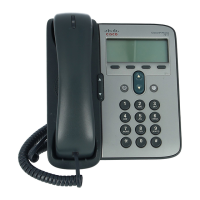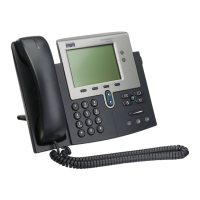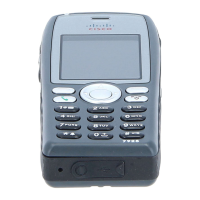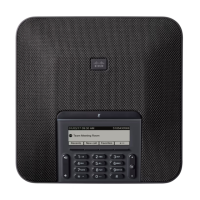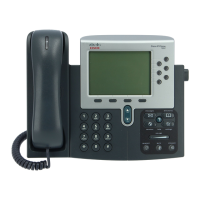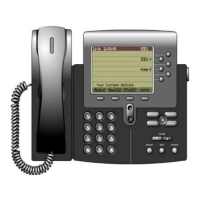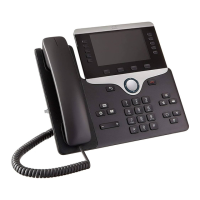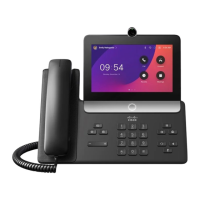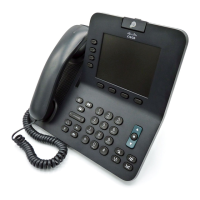9-23
Cisco Unified IP Phone 7961G/7961G-GE and 7941G/7941G-GE for Cisco Unified Communications Manager 6.0
OL-11953-01
Chapter 9 Troubleshooting and Maintenance
Monitoring the Voice Quality of Calls
It is important to distinguish significant changes from random changes in metrics.
Significant changes are scores that change about 0.2 MOS or greater and persist
in calls that last longer than 30 seconds. Conceal Ratio changes should indicate
greater than 3 percent frame loss.
MOS LQK scores can vary based on the codec that the Cisco Unified IP Phone
uses. The following codecs provide these maximum MOS LQK scores under
normal conditions with zero frame loss:
• G.711 codec gives 4.5 score
• G.729A/ AB gives 3.7
Note • CVTQ does not support wideband (7 kHz) speech codecs, as ITU has not
defined the extension of the technique to wideband. Therefore, MOS scores
that correspond to G.711 performance are reported for G.722 calls to allow
basic quality monitoring, rather than not reporting an MOS score.
• Reporting G.711-scale MOS scores for wideband calls through the use of
CVTQ allows basic quality classifications to be indicated as good/normal or
bad/abnormal. Calls with high scores (approximately 4.5) indicate high
quality/low packet loss, and lower scores (approximately 3.5) indicate low
quality/high packet loss.
• Unlike MOS, the Conceal Ratio and Concealed Seconds metrics remain valid
and useful for both wideband and narrowband calls.
A Conceal Ratio of zero indicates that the IP network is delivering frames and
packets on time with no loss.

